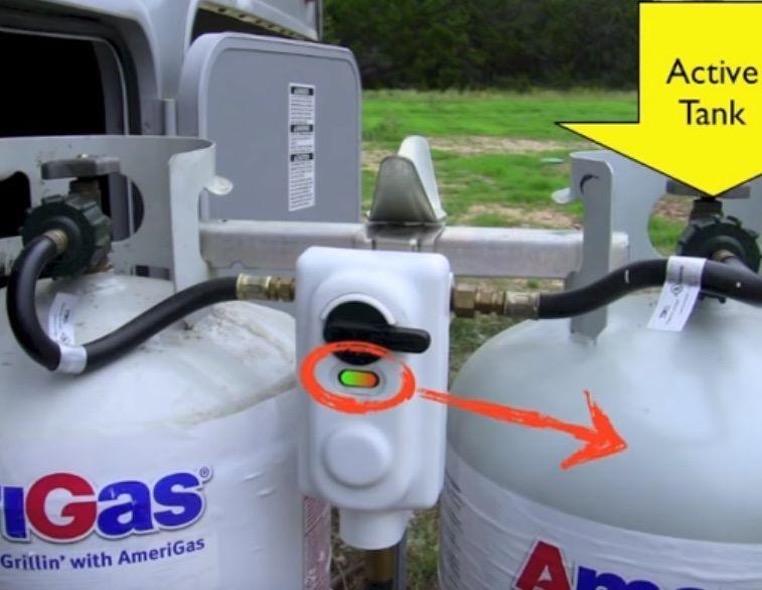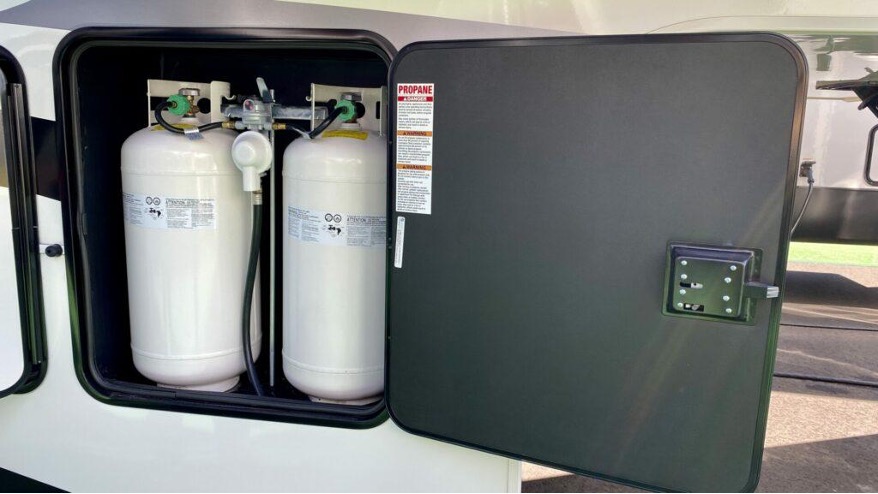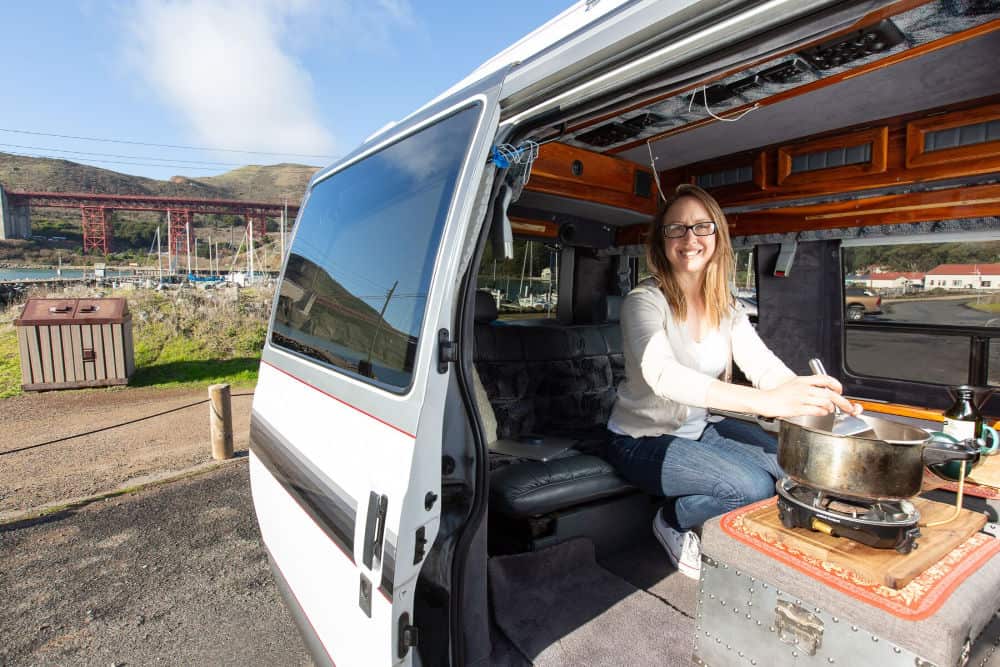Moving places in an RV is exciting, especially when you feel it’s a ‘home on wheels. Select your destination and take your RV to the desired place to spend quality time. Speaking of home on wheels, you can cook and do a lot more in your RV. Speaking of cooking, you can use propane gas as fuel for your RV, but are you aware of the hazards they impose? There are alternative fuels, but being an RV freak, you must know why people are ditching propane baking. We did some research to find out the present trend and concluded that ditching RV could be the best.

There are some disadvantages of heating with the aid of propane gas inside an RV. But propane as a gas needs to be delivered. Although propane is considered in the same category as heating oil, there is a fundamental difference between heating oil and propane. In the case of heating oil, the homeowner always owns the tank, but with propane gas, it’s the supplier owns the tank. There are some notable disadvantages of using propane gas.
- Switching the propane supplier is arduous: Since most of the time, the propane company owns the tank, they cannot fill it even if you insist on them.
- A difficult gas for price comparison: While you want to fulfill the propane tank, then you will have to face a lot many questions like price per gallon and also your consumption for the entire year. The integrities are much less complicated with any other fuel, like heating oil.
- A costly affair: Propane gas is generally pricier than cooking oil. There is 35% more propane to generate the same amount as cooking oil. If you compare the prices, you will have to multiply by 1.35 to get the same amount.
- Harming the environment: According to a new report, the gas emitted from the stove harms the environment. The methane gas emitted from the stoves reacts with the layers of the atmosphere to create carbon dioxide and water vapor. Methane is a standard greenhouse gas and is a troublemaker. Using propane gas is not recommended as breathing or swallowing could be harmful as it reaches the place of oxygen in the lungs making breathing a problematic affair.
- Harmful for humans: When used in high concentration, propane gas displaces oxygen and causes suffocation. Breathing in high concentrations may cause dizziness, light-headedness, nausea, and headache. There could be a loss of coordination.
Quick Suggestions for Selecting a Camping Stove
Well, for camping, there are some tips to be kept in mind. You can choose between a lightweight and a backpacking option. According to the Mountain Safety Research Institute, a two-burner RV stove designed for car camping is ideal. There are two options for stoves- camping or maybe backpacking. Any of the backpacking stoves will also get the job done. Both power and lightweight would come for a better price. Single burner canisters are okay for use. That’s a point to consider. There are pretty budget-friendly stoves ranging between $(150 -200). Let’s see some kind of RV stove in use while you are on the move.
Coleman Gas Camping Stove
This runs on a propane canister and has 10,000 BTU per burner. They are inexpensive and ideal for car camping. You can use it for even 1.5 hours on a full propane cylinder. They have a matchless lighting system, windscreen as well as adjustable knobs.
Chef Camp Everest 2x High-Pressure Stoves
They are a propane canister and 40,000 BTU combined. The stove has an auto igniter with windscreens, blocking wind from both sides and saving a mess with the food. The stove is pricier and $170.
Coleman Gas Stove Portable Bottle Top
Runs on propane canister and 1,000BTU per burner. This burner is ideal for camping. It’s easy, quick, and doesn’t burn your pocket. This RV stove is easy to set up, and you can use a matchbox or a lighter. The stove doesn’t have wind protection, and the wind conditions can make it even more complex.
MSR XGK EX Stove
It runs on liquid fluid, and it could be the best choice for cooking up more things at a time. The stove is adjustable, sturdy, and can hold up to pots of many dimensions. In case you are planning for a longer and colder backpacking trip, this model could be ideal. It’s priced at $190.
Camp Chef Teton 2 Burner Stove
This is a propane canister and 10,000 BTU combined. In case you are planning camping with larger groups, then this could be ideal. It has a three-sided windscreen, auto ignition, and adjustable temperature. The heat output is almost the same as other burners, but the cost is not significantly higher but just $150.
Eureka Ignite Plus Two-Burner Camp Stove
This burner is supported by propane canister fuel and has 10,000 BTU combined. This is recommended for car tripping and camping. It’s fuel-efficient and has auto ignition facilities; hence there is a need for a lighter to start. If you run out of propane gas supply, you can get an adapter at home depot to hook up to a 10-gallon refillable propane tank. It starts at $116 per piece.
MSR Whisperlite International Backpacking Stove
This model depends on liquid fuel and weighs 10.9 ounces; almost lightweight and has added to the versatility of using liquid fuel. Critics say that this RV stove has better heat control and can be used for water, sauteing vegetables, and also baking a cake. The stove is priced at $130.
MSR Pocket Rocket 2stove
This RV stove depends on isobutane propane and is one of the most recommended ovens. This is a lightweight and relatively affordable price. The oven comes with a hard shell protective case and is available for those on a tight budget. Priced at $50, this oven is an excellent option for campers.
Jetboil Flash Cooking System
This runs on an isobutene propane canister type and is 9000BTU per burner. This is a 1-liter cup fitting into a small stove mounted on top of an isobutene propane mix. Priced at %115, this is primarily aimed at boiling water, making coffee, cooking, and cleaning.
There are specific health hazards in case you are using propane as a fuel. Let’s read about the consequences that propane gas can bring about.

- Inhaling propane gas can lead to asthma issues in children and cause respiratory concerns in adults. In case somebody is suffering from lung-related disease, then inhaling propane might cause further hazards.
- In case any family member is suffering from thyroid issues, they would be further affected by petroleum; they should be extra cautious before using this type of fuel.
- If anybody has a complex detoxification pathway, he is at high risk. They would be unable to usher any toxins from the body.
- The presence of natural gas can enhance the tendency to increase viruses, molds, dust mites, and also bacteria.
In case you or your family member is having any one of the above symptoms, then it’s better to avoid propane as a medium of cooking inside the RV. Going for the liquid fuel type could be a better choice in this case.
In case you are using propane gas, you need to keep in mind the following points. Abide in the issues meticulously so that you may stay away from any unforeseen circumstances.
- It’s advisable not to paint the propane cylinders, mounting hardware, or any valve. These might affect the valves, mark any issues or cause a complete system failure.
- Even while traveling, you need to keep your propane switched off. This is not safe and can cause lethal consequences.
- You must always ventilate the RV while using propane gas. Burning propane gas might cause carbon monoxide, a colorless and odorless toxic gas that might bring harmful consequences. You can crack open a window and let the gas go off.
- You have to take your RV on a route where propane gas is available. In certain parts of the USA, transporting propane gas is restricted. You have to check the routes before finally setting your journey anywhere.
- Always keep your propane gas in the shade, and always avoid placing the gas in areas where the temperature is above 120 degrees Fahrenheit.
- While winter arrives, you have to make sure that the tank is kept covered. Although the low temperature is harmful, ice and snow can always shorten the life of a gas tank.
If you feel that an issue cannot be solved by yourself, involve a professional who can investigate the matter. It looks like using propane gas for baking and other uses inside the RV could be harmful and hectic, too, as you have to mind many steps and take precautions.
Considering all aspects, you should be careful while choosing propane as the fuel type for your RV. You can ditch propane baking while RVing and choose any RV stove. RVing could be fun, but make sure you are selecting the suitable fuel mode and any other items you carry. Nothing could be more essential compared to our health.

